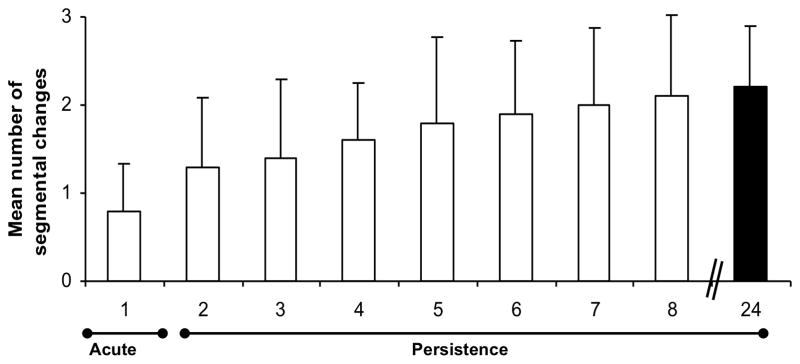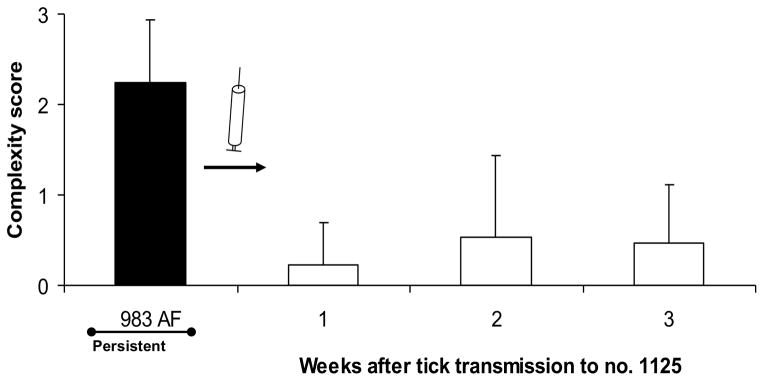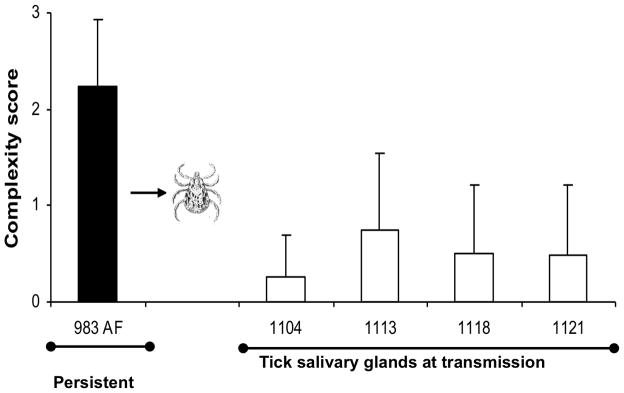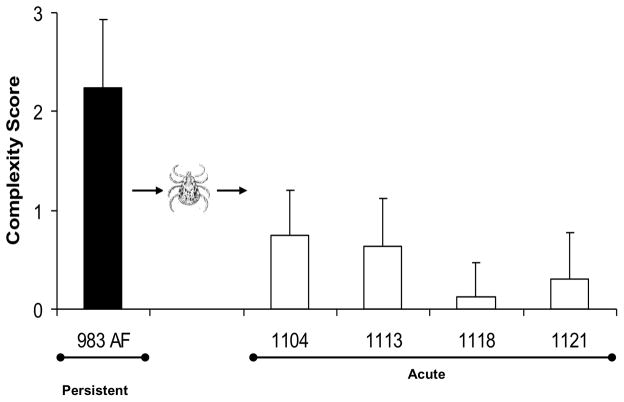Figure 3. Complex variants are favored only under selection pressure of the adaptive immune response.
A) Development of complex Msp2 variants during persistent infection; complexity, measured by the number of expression site segments derived from different donor alleles (see Fig. 2B) is plotted on the y axis and duration of infection (in months) is shown on the x axis. At 24 months of infection (solid bar), this animal was used both as the source for direct transmission by intravenous inoculation of A. marginale into immunogically naïve animals (Fig. 3B) or for acquisition feeding of Dermacentor andersoni for tick transmission (Figs. 3C and 3D). B) Expression of simple Msp2 variants following direct inoculation of complex variants into an immunologically naïve animal. Solid bar, complexity score of A. marginale variants in persistently infected calf 983. These were inoculated intravenously into immunologically naïve calf 1125. Open bars, complexity of the Msp2 variants emergent during the 3 weeks of acute bacteremia. C] Expression of simple Msp2 variants in the tick salivary gland. Solid bar, complexity score of A. marginale Msp2 variants in persistently infected calf 983 during the acquisition feeding of ticks. Open bars, complexity of the variants in the salivary glands of ticks subsequently transmission fed on each of four calves (calves 1104, 1113, 1118, and 1121). D] Expression of simple Msp2 variants following tick transmission to immunologically naïve animals. Solid bar, complexity score of A. marginale msp2 variants in persistently infected calf 983 during the acquisition feeding of ticks. Open bars, complexity of the variants arising during acute infection following tick transmission to each of four immunologically naïve calves (1104, 1113, 1118, and 1121). Data, figure, and legend from ref. 41 with permission.




